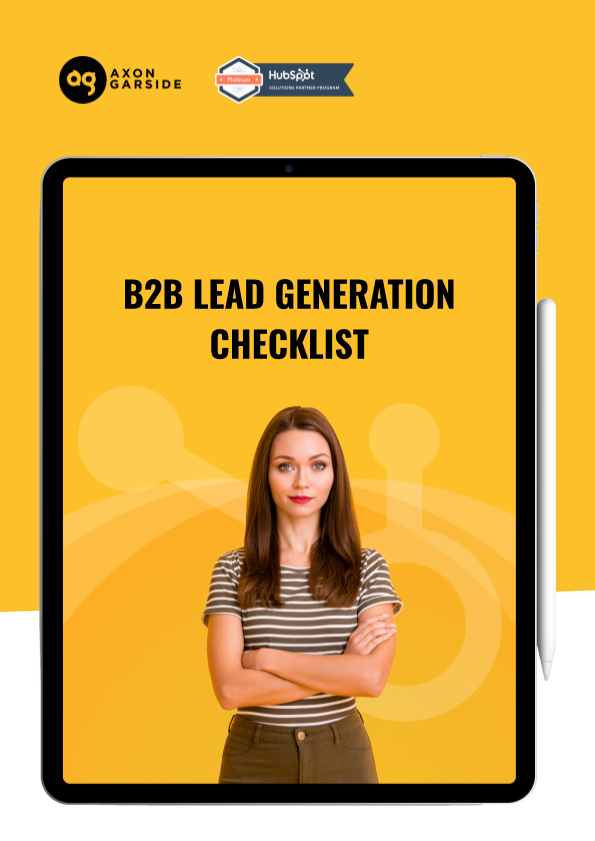Why a Fancy Layout is No Longer Enough in B2B Website Design
Successful b2b website design means not only creating an interesting engaging look and feel, it requires an understanding of how to present content.

We all love responsive design and parallax scrolling will still be cool in 2015, but how a site looks is really only one element in modern successful B2B website design. Google has always had the mantra that you create content for website visitors, not for search robots. That's all well and good, but it's the Google search algorithm that dictates the level of exposure you get in the search results, so it stands to reason that you have to cater for both.
The evolution of SEO
Google makes around 500 adjustments to its algorithm every year, most of which we don't even know about. However, the big ones like Panda and Penguin, which were in fact massive hammers to bat away spammy duplicate content sites that managed to sidle their way to the top of a lot of search results, resulted in sweeping losses for a lot of normal sites. Their supposedly 'white hat' SEO methods of linkbuilding and guest blogging suddenly came under great scrutiny and stuck a knife through the heart of many SEO 'gurus'.
Since 2005, when Axon Garside really started to pay attention to how we got our clients' sites ranking for their desired search terms, we've always pushed that need to create clean code sites where the content is allowed to shine through, with the use of alt tags and header tags to steer the visitor and the robots to the subject matter of the page. It's heartening to see so many of our old sites still competing for those terms, with no 'gardening' being done. It was good relevant content then and it's still good relevant content now.
Times have moved on and what seemed like a crowded, competitive market back then is even more dizzying now. If you're starting from scratch or planning on reworking your current site, is it really possible to get any sort of traction for your desired keyword in say, the next three years?
The Hummingbird update
Going back to Google and its algorithm, you may have heard about the Hummingbird update. This was Google saying that as people have become more familiar with search, their searches have become more conversational. As a result of the learning and vast array of information the Google databases hold, their search function is capable from a semantic and contextual point of view of deciphering the intent of any search. What does that mean? Basically, Google is saying that if you enter a question, Google will return the answer. So how do you structure your site to suit this?
If you're doing it right, your web pages shouldn't be aiming to rank for certain terms or queries. What they should be doing is answering questions that searchers have. That completes the secondary part of the equation, but not necessarily the first. We tend to class regular web pages as 'bottom of the funnel' pages. They tend to be the sell of the products or services you offer, how you deliver them and who you deliver them for. In contrast, it is a 'top of the funnel' job to discuss the customer problems and pains that your products and services resolve. The issue is that you can't endlessly create web pages addressing these problems and pains - it would be a logistical nightmare and a real headache when it comes to organising your site map. So, what's the solution?
The SEO solution
B2B blogging doesn't always sit comfortably with people we speak to. The time, expertise and resources required can seem pretty daunting, but we've seen time and time again how well it works. Your blog is a stream of content you can create on your site, especially if you're using HubSpot or even WordPress, that allows you, free of the constraints of a standard navigation, to pour valuable information on to a page. It exists both on the web in its own right and as a connected entity to boost your authority and build trust regarding your chosen subject matter.
Think about the number of times you've actually shared a blog, compared to the number of times you've shared a standard web page. That conversational or perhaps even controversial element makes it shareable, makes it interactive - and is absolutely on point for what Google is talking about when it comes to making great content.
Google knows how valuable social is - it wants to index content that has a date associated so it knows it's new and fresh, it wants an author with a host of social media profiles so there's an evidence trail that it wasn't written by some automated scraping bot. It's a very clever model that has not only driven up the number of people using Google's social networking tools, but assures the quality of content returned in search results as it can factor in the human element of review and comment on what it returns.
Blogging means you can speak to your audience to keep them up to date with your current products and services, as well as attracting new customers by discussing their potential pain points and connecting them with your offerings to connect that conversational search to a buy-in on you. That's why blogging should be a key element of your overall inbound marketing campaign.
 Paul Marshall
Paul Marshall
